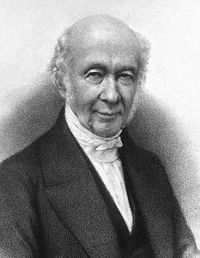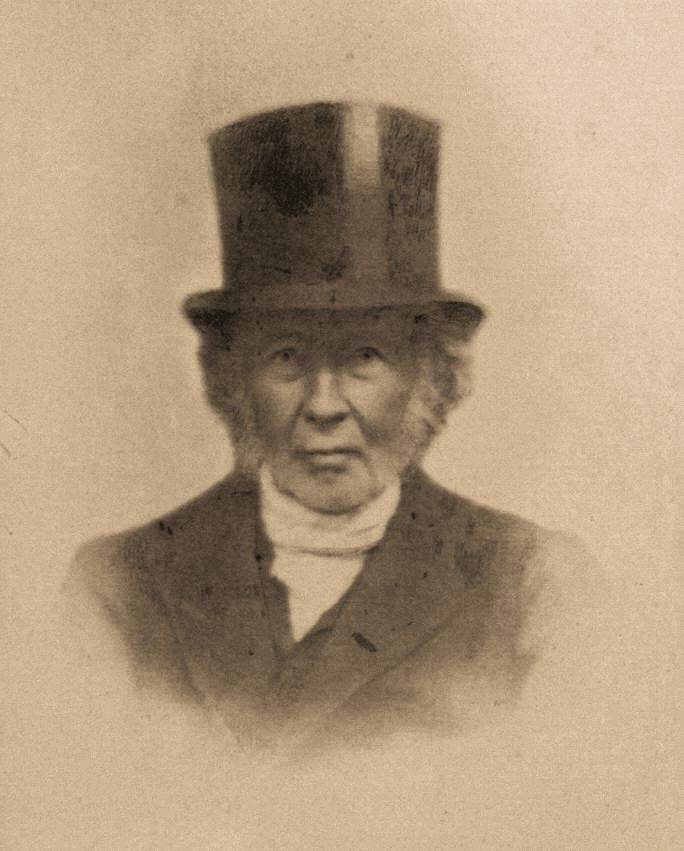Carl Reichenbach
Karl ( Carl ) Ludwig Friedrich von Reichenbach ( born February 12, 1788 in Stuttgart, † January 19, 1869 in Leipzig) was an industrialist, chemist, naturalist, philosopher, and Baron.
Life and work
Reichenbach's father was Carl Ludwig Reichenbach (1757-1837), Duke of Württemberg librarian and archivist; the family had a total of four children. The grandfather Jeremiah Frederick Reichenbach (1725-1810) came from the resident surgeon in Cannstatt family. An aunt of Karl Ludwig von Reichenbach was the painter Ludovike Simanowiz and an uncle of his was William Henry (1763-1843), Life and regimental of Duke Friedrich Eugen of Württemberg in Montbéliard.
During his studies, Carl Ludwig Reichenbach founded in 1806 in Tübingen, a secret society to establish a colony on Tahiti ( Otaheite ) in the South Seas ( Otaheite Society). The end of 1808, the company was discovered by the police and most of its members arrested on suspicion of treason. Reichenbach was detained for some time at Hohenasperg.
After studying natural sciences in Tübingen, he worked for the iron forges in the Baden Hausach. Where he developed and marketed new furnaces for carbonization. After completing his doctorate, he moved into the Moravian Blansko to work for Count Salm in the iron and steel enterprises. During this activity, he dealt with the constituents of wood tar. It was discovered by Reichenbach in 1830 and 1832, the paraffin creosote, an antiseptic phenol mixture. These discoveries soon brought him a considerable fortune, and led in 1839 to his ennoblement as barons.
On November 15, 1833 went down in a meteorite Blansko. This event was fascinated by Reichenbach in such a way that made a search of his workers for days, until the meteorite was found. In the following years, he used his fortune also help to start a major meteorite collection. The terms kamacite, taenite and Plessit for components of iron meteorites go back to him. In 1869 he donated his collection of mineralogical show and teaching collection in Tübingen, where they can still be seen today.
1835 acquired the Reichenbach Cobenzel castle near Vienna. Because of his experiments carried out in the castle he received from the Viennese called the " Wizards of Cobenzel ".
For his wife Friederike Louise born Erhard Reichenbach bought made around 1831 Liebesvase the sculptor Friedrich Distelbarth. After her death in 1835 he donated the Monumentalvase the city of Stuttgart, which then in 1836 made him an honorary citizen. In marriage five children were born, of whom a son and a daughter survived, which later resided mainly in Vienna.
From 1841 devoted himself to the study of Reichenbach scientific frontier areas. At the center of these investigations was postulated by him life force Od ( Odin ). Od, according to him, a magnetism similar force. In his studies of Reichenbach claimed that gifted people, he called them sensitive, in dark rooms faint light phenomena could perceive with magnets. The proximity to mesmerism and the fact that other researchers ( among them Jöns Jakob Berzelius and Gustav Theodor Fechner ) Reichenbach's experiments could not be repeated, earned him harsh criticism and made him increasingly bitter in his last years.
1911 Reichenbach alley in Vienna-Favoriten was named after him.
Discount
From his estate in 1889 the font Caroline von Linsingen, the wife of an English prince were anonymous. Unpublished letters and treatises (...) published that caused a stir in the German and English press.
Works
- Karl von Reichenbach: The creosote: a newly discovered constituent of the common smoke, the wood vinegar and all kinds of tar 1833
- Karl von Reichenbach: Geological messages from Moravia Vienna, 1834
- Karl von Reichenbach: Physico- physiological studies on the Dynamide of magnetism, electricity, heat, light, the crystallization, the chemistry in its relations with the life force ( Volume 1 Volume 2 ) Braunschweig, 1850
- Karl von Reichenbach - odically magnetic letters Stuttgart 1852, 1856; Ulm 1955
- Karl von Reichenbach: The sensitive man and his behavior Ode to Stuttgart and Tübingen ( Volume 1 Volume 2 1854 1855)
- Karl von Reichenbach: blind faith and after wisdom: The Lord C. Vogt in Geneva to reply Vienna, 1855
- Baron von Reichenbach: who is sensitive, who is not Vienna, 1856
- Baron von Reichenbach: odic Erwiederungen to the professors Fort situation, Schleiden, Fechner and Councillor Carus Vienna, 1856
- Karl von Reichenbach: The plant life in its relations with the sensitivity and the Ode Vienna, 1858
- Karl von Reichenbach: odic events in Berlin in the years 1861 and 1862 (PDF, 4.5 MB) Berlin, 1862
- Karl von Reichenbach: Aphorisms on sensitivity and Od Vienna, 1866
- Karl von Reichenbach: The odic Lohe and some motion phenomena as newly discovered forms of odic Princip in nature Vienna, 1867










